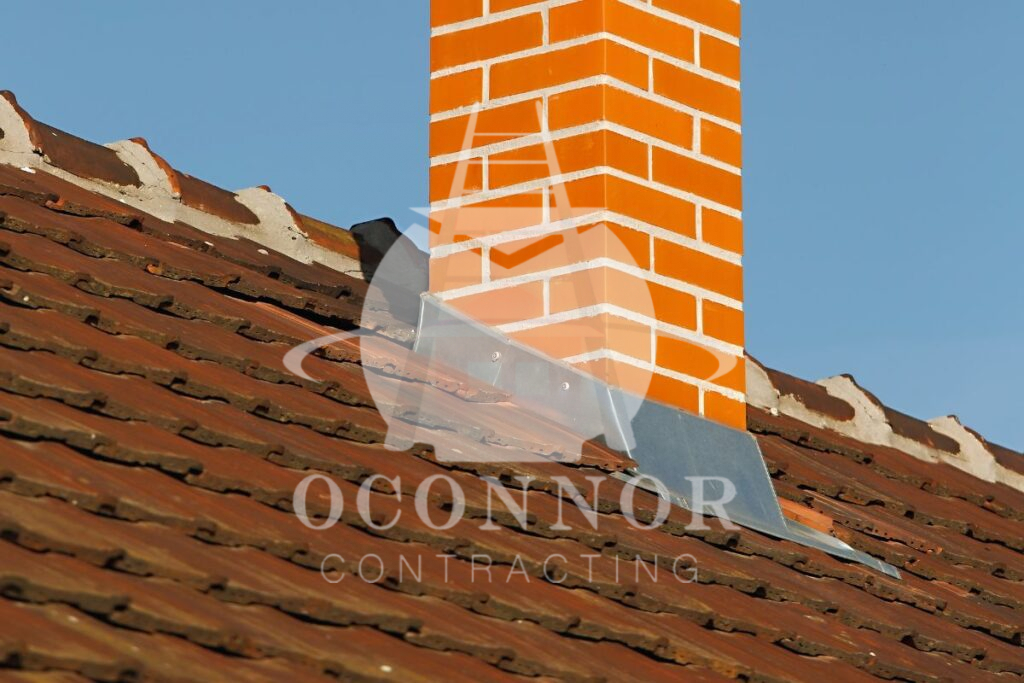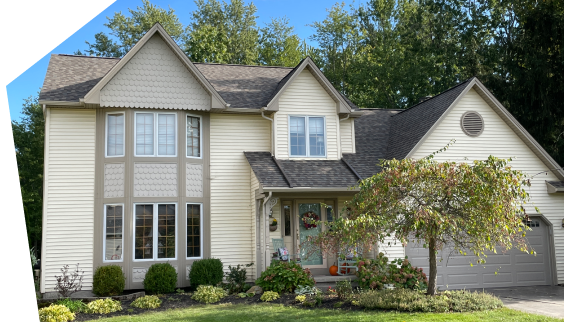Even though your roof might seem like a simple solid surface, it’s actually designed with certain openings, called roof penetrations, that help your home function properly. Sealing these areas correctly is crucial to maintaining their integrity and preventing water damage.
To protect these penetrations and your roof from any damage, let’s get into this blog post to learn about different roof penetration sealing methods.
What Are Roof Penetrations?

Essential for ventilation, natural light, and utility access, roof penetrations are openings made to install features like vents, chimneys, skylights, and HVAC systems. They support important systems like heating, air conditioning, and telecommunications, making them an essential part of your roofing system. Still, cutting through the roof can weaken its structure and make it vulnerable to weather and pests if not done correctly. That’s why careful planning and sealing are necessary to prevent leaks and potential damage. However, keep in mind that not all sealing methods can be used for all types of penetrations.
What’s The Difference Between Temporary And Permanent Roof Penetration Sealing?
Temporary roof penetration sealing offers a quick fix to stop leaks and prevent damage, using materials like tarps or sealants that are easy to apply and remove. Permanent sealing, on the other hand, involves durable repairs like replacing materials or installing flashing for lasting protection. While temporary fixes are affordable and useful in emergencies, they don’t solve underlying problems, making permanent solutions key for long-term roof integrity.
Common Roof Penetration Sealing Materials & Methods
Different materials and techniques are used to seal roof penetrations, each with unique benefits. Here are some of the most effective permanent methods so you know how to seal roof penetrations:
#1. Create Pitch Pockets (Pourable Seals)
For penetrations that need extra protection, pitch pockets offer a strong, pourable sealing solution. A metal or plastic enclosure is secured around the penetration with glue or heat, then filled with liquid sealants like silicone or polyurethane. As the sealant hardens, it forms a watertight barrier. While effective for complex or multiple penetrations, this method requires regular maintenance since the sealant can shrink or crack over time.
#2. Install Pipe Boots
These prefabricated covers called pipe boots are made to fit tightly around pipes and vents, making them a simple and effective option to seal roof penetrations. They are stretched over the penetration, glued or heated, and frequently reinforced with a metal clamp. As a kind of flashing, pipe boots offer a durable, watertight seal with little work.
#3. Secure with Banding
Wrapping a flexible material, which can be rubber strips or roofing tape, around the base of a puncture is known as banding, and it’s one of the most versatile sealing techniques. To create a tight, waterproof seal, a reinforcement band made of plastic or metal is placed around the roof penetration. This method is frequently used for pipes and ducts. For further longevity, it can be coupled with other methods.
For flat roofs, an unreinforced membrane is secured around the base using adhesive and is fastened with a jubilee clip to provide additional stability.
#4. Use Compression Seals
In this method, flexible materials like rubber or foam are pressed tightly around the object with a ring or plate. This method is useful when sealing roof penetrations in areas where the roof expands or contracts due to temperature changes, ensuring a secure seal that adapts to movement.
#5. Apply Cover or Counter Flashing
A metal sleeve is placed over plastic pipe roof penetrations, and cover flashing extends over the sleeve to protect the waterproofing layer. This technique is also used to seal roof penetrations around skylights, upstand curbs, and support bases, adding an extra layer of protection.
#6. Coat with Liquid-Applied Membranes
For a complete solution, a seamless waterproofing solution can be applied to the entire roof. Once cured, it forms a strong, flexible membrane that adheres well to materials like concrete and metal, providing long-term protection for sealing roof penetrations. Remember, roof coatings and membranes are not compatible with every roof type.
#7. Protect with Cementitious Waterproofing
Depending on the type of roof, a cement-based mixture can be applied to the roof surface, forming a rigid, waterproof barrier. It’s an effective method for roof penetration seals on concrete and flat roofs, offering strong adhesion and resistance to water penetration.
#8. Seal with Flashing

Specially designed materials, typically metal or rubber, create a waterproof barrier around a roof penetration. Different types of roof penetrations require specific flashing techniques to prevent leaks and ensure proper sealing.
Why Is Sealing Roof Penetrations Important?
To understand why sealing is so crucial, let’s break down the key benefits:
1. Stops Leaks
Roof penetrations like vents and chimneys create weak spots. Sealing blocks rain, snow, and ice from getting in.
2. Protects the Building
Water can damage insulation, weaken walls, and cause rot. Sealing prevents costly structural issues.
3. Prevents Major Damage
Leaks lead to mold, rot, and ruined interiors. Proper sealing stops these problems before they start.
4. Improves Weatherproofing
A sealed roof keeps out wind, snow, and rain, helping maintain indoor comfort.
5. Extends Roof Life
Water damage wears down a roof fast. Sealing helps it last longer and saves money on repairs.
6. Lowers Repair Costs
Fixing a leak early is cheaper than dealing with major water damage. Sealing helps avoid expensive fixes.
7. Reinforces Weak Spots
Roof cuts for penetrations weaken the structure. Sealing strengthens these areas for added stability.
8. Keeps Pests Out
Gaps around penetrations invite insects and rodents. Sealing closes these entry points.
9. Long-term Protection
A well-sealed penetration lasts as long as the roof, reducing maintenance needs.
What Are Some Common Types of Roof Penetrations?
To properly seal a roof, homeowners should understand what type of penetrations are in their roof. Let’s go over the most common types and how they impact your roof:
1. Skylights

Bringing natural light into a space, skylights are a type of roof penetration installed through roof openings covered with glass or acrylic. Available in both fixed and operable designs, they enhance aesthetics and energy efficiency. However, improper sealing can lead to leaks, making proper flashing and waterproofing crucial to preventing water damage.
2. Attic Ventilation Systems
Regulating temperature and moisture levels, attic ventilation systems include ridge vents, box vents, and gable vents. These roof penetrations help prevent heat buildup in the summer and ice dams in the winter. When installed correctly, they improve airflow while minimizing the risk of leaks and structural deterioration.
3. Chimneys and Exhaust Vents

Allowing smoke and gases to exit safely, chimneys and exhaust vents have an important role in maintaining indoor air quality. Chimneys are commonly built from masonry or metal, while exhaust vents remove fumes from appliances like water heaters and kitchen hoods. Both roof penetrations require proper flashing and routine inspections to prevent leaks and ensure long-term efficiency.
4. Plumbing Vent Stacks
Maintaining proper airflow in plumbing systems, vent stacks extend through the roof to release sewer gases. Without these roof penetrations, drainage systems can become sluggish, and foul odors may enter the home. Since they penetrate the roof, they must be sealed with flashing or pipe boots to prevent leaks and moisture damage.
5. Telecommunications Equipment
Satellite dishes, antennas, and other equipment are often mounted on rooftops. If not properly installed, these roof penetrations can create openings where water can seep in. Using weatherproofing techniques and following installation guidelines helps maintain the roof’s integrity.
6. HVAC Components
HVAC components such as exhaust fans, ductwork, and air conditioning units require roof penetrations to function efficiently. Without proper flashing and sealing, these openings can become weak points for water infiltration. Regular maintenance ensures both the efficiency of the system and the protection of the roof.
7. Solar Panels

Making use of solar energy for residential and commercial use, solar panels are secured to roofs using brackets that create small roof penetrations. While they offer significant energy savings, improper sealing can lead to leaks. Professional installation ensures that mounting hardware is properly fastened without compromising the roofing structure.
8. Electronic Conduits
Protecting electrical wiring, electronic conduits connect various systems, such as security cameras and satellite internet, through roof penetrations. Poor sealing can create entry points for moisture, leading to long-term damage. Proper installation and routine inspections help maintain a watertight barrier and prevent potential issues.
What Is The Best Sealant For Roof Penetrations?
If you opt for liquid sealants, there are a few different types available. Choosing the right sealant ensures long-lasting protection against water and weather damage. To help you decide, let’s compare the best sealants for roof penetrations:
Silicone Sealants
Silicone sealants provide excellent waterproofing and UV resistance, making them a great choice for sealing roof penetrations exposed to heavy rain and sunlight. They work especially well on flat roofs, where water pooling is common, as they stay flexible and durable over time. A properly applied roof penetration seal helps prevent leaks and extends the roof’s lifespan.
Polyurethane Sealants
Similarly, polyurethane sealants are strong and long-lasting, ideal for areas with heavy foot traffic or mechanical impact. They bond well to different roofing materials and offer great water resistance, though they don’t hold up to UV exposure as well as silicone sealants. They are commonly used on sloped roofs and around penetrations like chimneys and vents.
Secure Your Home with OConnor Contracting’s Expert Roofing Services!
Sealing roof penetrations is crucial for preventing leaks and water damage. Understanding the types of penetrations, the right sealants, and proper sealing methods helps keep your roof strong and well-protected.
Don’t let roof penetrations turn into costly problems. At OConnor Contracting, we provide expert roofing services, whether you need a quick repair or a full roof replacement. Our team ensures every roof penetration seal is properly applied, protecting your home from leaks and long-term damage. To get the best for your roof, contact us today at (716) 600-7663!


